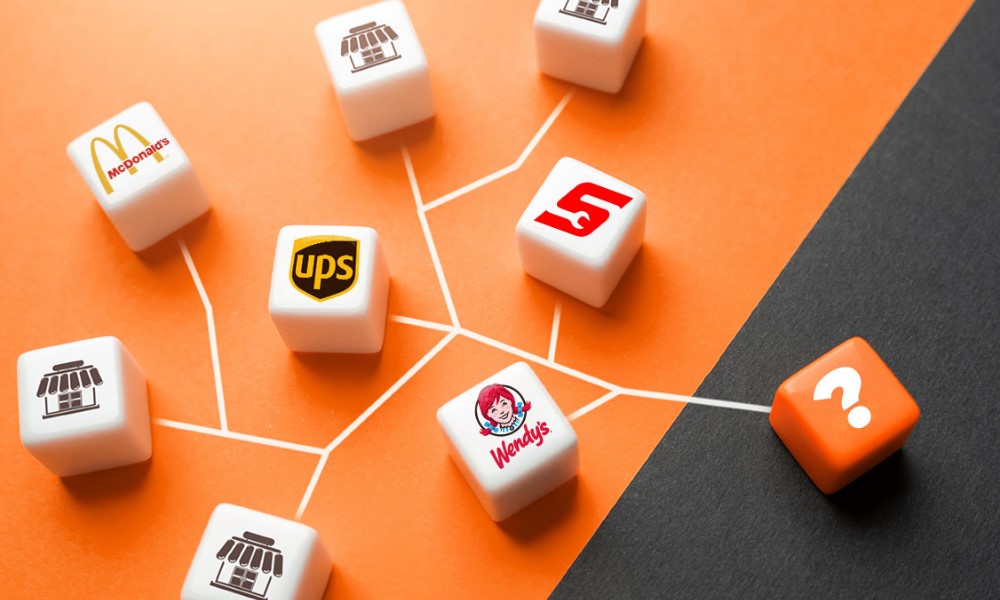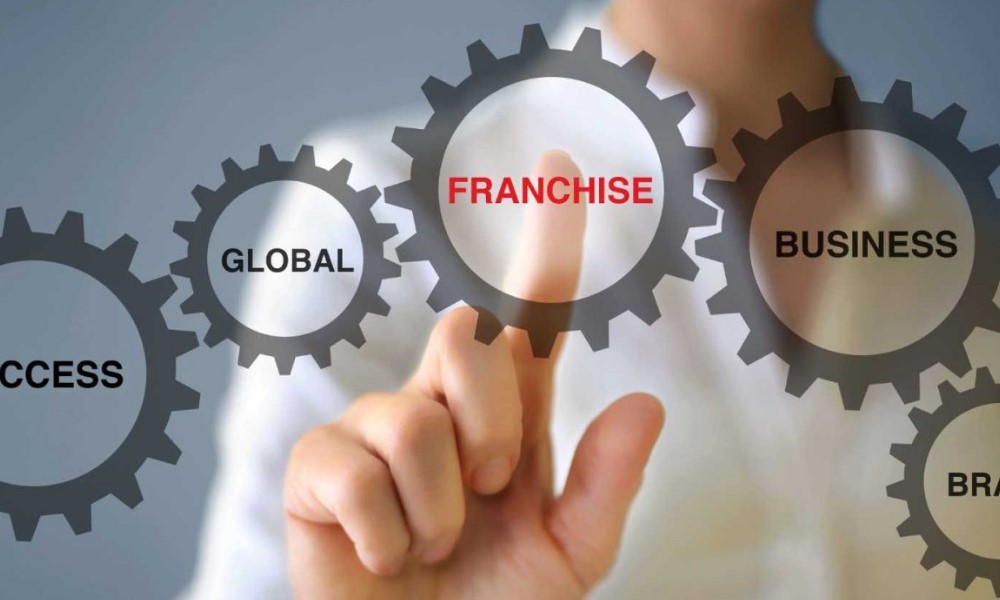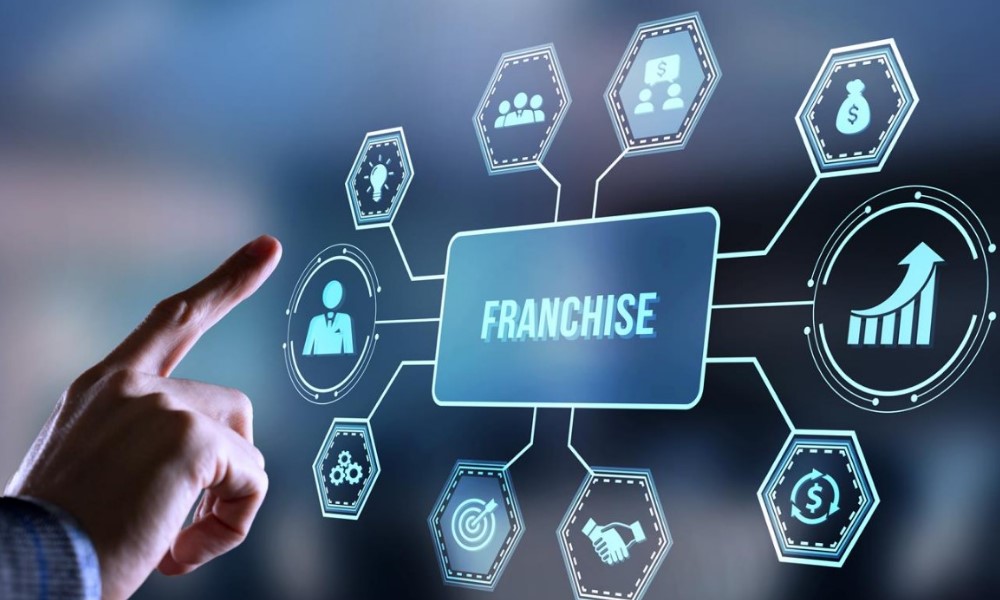Top 10 Franchises with the Highest Profit Potential
Choosing the right franchise to invest in can be the key to unlocking a profitable business venture. Franchising offers a reliable business model, the backing of an established brand, and a comprehensive support system. This guide will introduce you to the top 10 franchises with the highest profit potential in 2024, explaining their advantages, investment requirements, and essential information to help you make a well-informed choice.
What Makes a Franchise Profitable?

Understanding the factors that contribute to a franchise’s profitability is essential for selecting the right investment. Here are some key elements that influence profit potential:
- Brand Strength: Well-established franchises attract customers more easily because of brand recognition, which translates to increased sales and customer loyalty.
- Market Demand: Some industries, like fast food and business services, experience consistent demand, making franchises in these sectors more profitable.
- Cost Efficiency: Franchises with efficient operational models tend to have lower overhead costs, increasing the profit margin for franchise owners.
- Training and Support: Franchisors that provide strong support and comprehensive training help franchisees streamline operations, which can boost profitability.
These factors make franchises in specific sectors, such as quick-service restaurants, education services, and business support solutions, stand out for profitability. Let’s delve into the top 10 franchises that offer substantial profit potential, covering their unique advantages, costs, and reasons why they could be a rewarding investment.
Top 10 Franchises with the Highest Profit

Investing in a franchise offers a structured business model and established brand reputation, significantly increasing the likelihood of success. Here’s a look at ten franchises with excellent profit potential, including investment requirements, benefits, real-world examples, and guidance on how to purchase.
1. McDonald’s
- Investment Costs: McDonald’s franchise requires a minimum investment of around $1 million to $2.2 million, depending on location and restaurant size.
- Benefits: McDonald’s offers one of the strongest brand recognitions worldwide, providing extensive marketing, operational support, and training to franchisees.
- Real-World Example: McDonald’s franchises report high returns due to continuous demand and a loyal customer base. Franchisees often succeed in high-traffic areas like city centers or near highways.
- How to Buy: To start the process, visit McDonald’s franchise page and submit an application after meeting their requirements.
2. Dunkin’
- Investment Costs: Dunkin’ requires an investment ranging from $109,700 to $1.7 million, depending on location and facility size.
- Benefits: Dunkin’ is known for its coffee and breakfast options, catering to morning commuters and daily customers. Franchisees receive strong support in marketing, supply chain, and operations.
- Real-World Example: Dunkin’ franchises often perform well in suburban and urban areas where demand for coffee and snacks is high.
- How to Buy: For more information, check out Dunkin’s franchise website and review their requirements.
3. The UPS Store
- Investment Costs: This business services franchise requires an investment of $138,433 to $470,031, which is lower than most food franchises.
- Benefits: The UPS Store meets the needs of small businesses and individual customers, offering services like shipping, printing, and packaging.
- Real-World Example: Locations near universities or commercial centers generate steady income from students, freelancers, and local businesses.
- How to Buy: Apply via The UPS Store’s franchise site and complete their requirements.
4. Subway
- Investment Costs: Subway’s lower initial investment ranges from $100,550 to $342,400, making it accessible for many investors.
- Benefits: Subway is well-regarded for its healthy fast-food options, making it a popular choice in various locations. Franchisees benefit from brand flexibility and lower operational costs.
- Real-World Example: Subway performs well in locations like shopping centers and near office spaces, attracting customers seeking quick, healthy meals.
- How to Buy: Visit Subway’s franchise website to review their guidelines.
5. Kumon
- Investment Costs: Kumon requires a moderate investment of around $70,000 to $150,000.
- Benefits: Kumon offers educational services to children, which are in high demand in family-oriented areas. Franchisees benefit from Kumon’s established learning methods and brand reputation.
- Real-World Example: Many Kumon franchises thrive in suburban neighborhoods with high numbers of school-aged children.
- How to Buy: Learn more on Kumon’s franchise page.
6. 7-Eleven
- Investment Costs: Initial investment for a 7-Eleven ranges from $47,000 to $1 million, depending on store location and size.
- Benefits: 7-Eleven offers convenience items to customers around the clock, making it ideal for high-traffic areas. Franchisees receive training and support in operations and product sourcing.
- Real-World Example: Urban locations with high foot traffic generate consistent returns, especially in residential neighborhoods.
- How to Buy: Visit 7-Eleven’s franchise page to explore available options.
7. Supercuts
- Investment Costs: Supercuts franchises require an initial investment of $144,000 to $293,000.
- Benefits: This hair salon franchise is in demand due to its affordability and consistent customer base. Franchisees benefit from training and marketing support.
- Real-World Example: Supercuts locations in shopping malls and busy commercial districts often see strong demand.
- How to Buy: Apply at Supercuts franchise website to learn more about requirements.
8. Anytime Fitness
- Investment Costs: Initial investment is around $78,000 to $521,437, depending on facility size and location.
- Benefits: Anytime Fitness caters to a growing fitness-conscious population. The franchise model allows for flexible hours and automated operations.
- Real-World Example: Locations in residential areas or near universities attract steady membership growth.
- How to Buy: Start the process at Anytime Fitness franchise website.
9. MaidPro
- Investment Costs: The initial investment for a MaidPro franchise ranges from $58,560 to $222,600.
- Benefits: MaidPro provides professional cleaning services, which are increasingly in demand in residential and commercial sectors.
- Real-World Example: MaidPro locations thrive in urban and suburban areas where busy professionals seek reliable cleaning services.
- How to Buy: Visit MaidPro’s franchise website for more information.
10. Mathnasium
- Investment Costs: Mathnasium requires an investment between $90,000 and $137,500.
- Benefits: This education franchise focuses on math tutoring for children, meeting the high demand for supplementary education. Franchisees receive extensive training and support.
- Real-World Example: Mathnasium locations near schools and family neighborhoods are popular for after-school tutoring.
- How to Buy: Explore Mathnasium’s franchise options.
Detailed Franchise Comparisons and Their Profit Potential

When selecting a franchise, understanding the differences between business models, investment levels, and profit potential can make all the difference in ensuring a profitable venture. Here’s a comparison of some of the top franchises in different industries, outlining their unique benefits, challenges, and profit potential to help you make an informed choice.
1. McDonald’s vs. Dunkin’
McDonald’s and Dunkin’ both dominate in the food and beverage industry, but each offers unique profit opportunities based on its brand appeal and target audience.
- Investment: McDonald’s has a higher initial investment, typically ranging between $1 million and $2.2 million, while Dunkin’ is more accessible, with an investment range of $109,700 to $1.7 million. McDonald’s substantial upfront cost comes with a globally established brand, but Dunkin’s affordability makes it appealing for those with moderate budgets.
- Profit Potential: McDonald’s is known for delivering high returns due to its broad customer base, consistent demand, and strong brand presence. Dunkin’, focusing on coffee and breakfast, captures daily commuter traffic and attracts loyal morning customers. Both franchises have excellent profit potential, but McDonald’s usually reports higher annual revenue because of its extensive food menu and larger franchise footprint.
- Ideal Location: McDonald’s is ideal for high-traffic areas like highways and city centers, while Dunkin’ thrives in suburban and urban locations with high morning foot traffic.
2. The UPS Store vs. Subway
The UPS Store and Subway cater to different needs, with The UPS Store focused on business services and Subway on quick-service food.
- Investment: The UPS Store requires an investment between $138,433 and $470,031, generally lower than Subway’s $100,550 to $342,400. This makes The UPS Store appealing for those looking for a lower-cost entry into franchising, especially outside of the food industry.
- Profit Potential: The UPS Store enjoys consistent demand for shipping, printing, and mailing services, especially near small business hubs, universities, and busy residential neighborhoods. Subway’s focus on health-conscious fast food appeals to a wide audience, but the recent increase in health-focused food options means it faces more competition.
- Operational Flexibility: The UPS Store has lower operational costs since it doesn’t require a full kitchen or food supplies, which can reduce overhead significantly. Subway, on the other hand, requires inventory and staffing for food preparation but offers streamlined training and brand support.
3. Kumon vs. Mathnasium
Kumon and Mathnasium are both education franchises that provide academic support for children, though their approaches and operational models vary.
- Investment: Kumon’s investment range is around $70,000 to $150,000, while Mathnasium’s is slightly higher, ranging from $90,000 to $137,500. Both options are relatively low-cost compared to retail and food franchises, making them attractive to investors interested in the education sector.
- Profit Potential: Both franchises benefit from the growing demand for supplementary education, with Kumon focused on self-paced, worksheet-based learning and Mathnasium emphasizing hands-on math tutoring. Mathnasium centers often attract a loyal client base due to its specific focus on math skills, making it ideal for neighborhoods with high numbers of school-aged children. Kumon has broader subject offerings, appealing to parents looking for comprehensive academic support for their children.
- Ideal Location: Both franchises thrive in family-oriented suburban areas or near schools, where parents seek reliable, ongoing academic support for their children. This demand leads to stable, recurring revenue.
4. 7-Eleven vs. Anytime Fitness
7-Eleven and Anytime Fitness both offer convenience but cater to different aspects of it—retail for 7-Eleven and fitness for Anytime Fitness.
- Investment: 7-Eleven requires an investment from $47,000 to $1 million, depending on location, while Anytime Fitness ranges from $78,000 to $521,437. 7-Eleven’s diverse investment options make it accessible, while Anytime Fitness attracts those looking to capitalize on the fitness industry.
- Profit Potential: 7-Eleven’s 24/7 operations provide continuous income, with revenue boosted by high-margin convenience items. Anytime Fitness benefits from the steady growth in health awareness, with members paying monthly fees. Fitness locations, especially in residential or high-foot-traffic areas, tend to build a loyal member base, leading to consistent income.
- Operational Differences: 7-Eleven’s retail model requires continuous inventory management, while Anytime Fitness’s automated systems allow franchisees to manage the gym with minimal staff, lowering overhead costs.
Advantages of Investing in High-Profit Franchises

Investing in a high-profit franchise offers substantial benefits, making it an attractive choice for entrepreneurs seeking a reliable business model and strong return on investment. Here are some key advantages:
1. Established Brand Recognition
One of the primary benefits of a high-profit franchise is the strength of the brand. Established franchises already have a recognized brand, which means customers are more likely to trust and visit the business from the outset. This brand loyalty reduces the need for extensive local marketing and accelerates the pathway to profitability.
2. Comprehensive Training and Support
High-profit franchises often come with robust support systems that guide franchisees through setup, training, and daily operations. Franchisors provide extensive training on brand standards, customer service, and operational procedures, which are essential for maintaining consistency across locations. This support minimizes the risks typically associated with starting a new business and ensures a smoother launch process.
3. Proven Business Model
A high-profit franchise generally offers a well-tested business model with established operational guidelines. This proven approach is designed to maximize efficiency, control costs, and optimize profits, providing franchisees with a clear roadmap to success. With streamlined systems already in place, franchisees can focus more on customer service and growth, rather than troubleshooting business strategies.
4. Access to Marketing Resources
High-profit franchises often invest in large-scale marketing and advertising campaigns, which benefit all franchise locations. National and regional marketing efforts enhance brand visibility and attract more customers, helping individual franchisees achieve higher foot traffic and sales without having to invest heavily in marketing themselves.
Use Cases of High-Return Franchises

These franchises solve different customer needs, attracting a broad audience and yielding consistent profits.
- Quick Service Restaurants (McDonald’s, Subway): Provide fast, affordable food options for customers seeking convenience.
- Business Services (The UPS Store): Serve the needs of small businesses, students, and remote workers with essential services like shipping.
- Educational Services (Kumon): Offer supplemental learning, ideal for communities with families who prioritize education.
How to Purchase a Franchise
1. Conduct Research
Evaluate each franchise based on your budget, local demand, and long-term goals. Franchise websites offer a wealth of information on requirements and estimated costs.
2. Submit an Application
Applications typically involve a review process to determine suitability. Start by applying on each franchise’s website.
3. Secure Financing
Many franchisees choose financing options, such as loans or personal savings, to cover initial costs.
4. Sign the Agreement
Once approved, franchisees sign an agreement that outlines both franchisor and franchisee obligations.
5. Attend Training
Training programs teach franchisees about business operations, customer service, and brand standards.
FAQs
Q1: Which franchise offers the highest profit potential?
A: McDonald’s is among the top franchises with high profitability due to its extensive reach and customer loyalty.
Q2: How much capital is required to start a profitable franchise?
A: Initial investment varies by franchise. While McDonald’s requires a higher upfront cost, franchises like The UPS Store offer a lower-cost alternative with steady returns.
Q3: Do high-profit franchises provide operational support?
A: Yes, most high-profit franchises, including those listed, offer training and support systems to help franchisees run their businesses smoothly.






